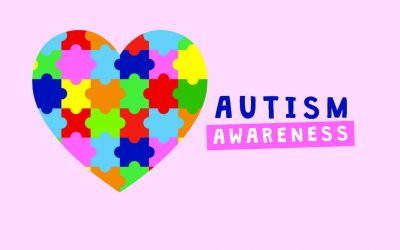Stop Turning A Blind Eye To Autistic Children
By C.A. Garland, Brenda Harris and Michael O’Hanlon for the Orlando Sentinel, Florida.
Thanks to a great deal of recent media attention, millions of Americans now know more about autism and related disorders than they did a few months ago. But many people are learning in a more personal way, because these debilitating neurological disabilities are now occurring in epidemic proportions among the nation’s youth.
There has been an explosion in the frequency of autism, pervasive
developmental disorder and Asperger’s Syndrome recently. In fact, at least
25,000 children are now diagnosed with autistic disorders each year.
Thankfully, there is some good news. There are now quite promising
treatments for autism, once thought to be effectively untreatable. For
example, up to half of those getting early and sustained help wind up being
mainstreamed in schools (even if major social challenges often persist for
them), and most of the rest do much better than they would have otherwise.
But even the good news has a sad side. Few families can afford the
treatments necessary to address this disorder properly. While the spotlight
is still on this issue, it is time for policy-makers to act, now, before the
moment is lost.
There has been some recent progress. For example, the National
Institutes of Health now devotes almost $100 million a year to try to
understand the origins and increased incidences of these neurological
disorders.
Working toward better prevention must be a key part of any strategy,
and our nation is increasingly making an effort to address the problem.
However, for those children already afflicted, it is too late to focus
on prevention, and currently unrealistic to talk about any medical cure.
What is most needed is remedial tutoring and therapy.
Yet while some school districts provide considerable help for autistic
children of normal school-going age, most do not do nearly enough. Also,
private health plans and local governments typically do not provide enough
assistance in the preschool years, when intensive treatment has the greatest
chance of repairing the brain.
That means the best chances for recovery from autistic disorders
remain a luxury for the wealthy, because they are often the only ones who
can afford the $20,000 to $100,000 a year in unreimbursed expenses commonly required in the prekindergarten years, or the geographically fortunate families who happen to live in school districts where rigorous help is
available.
There continues to be debate about which early-intervention programs
work best for treating autistic children. Some therapists emphasize ABA, or
applied behavior analysis, a method dating to the 1980s, but borrowing some
inspiration from how Helen Keller was taught.
It breaks down learning into small steps, and then uses positive
reinforcement to teach basic language and social skills.
Another method, called Floortime, builds on a child’s natural interests. As one would expect from the name, adults get down on the mats, following the child’s lead in play. The idea is to nurture creativity, communication skills and interpersonal bonds.
A third method, Relationship Development Intervention, shares Floortime’s emphasis on addressing the core deficits of autistic disorders, but focuses on a parent-led cognitive approach.
The best programs often use several methods, adjusting the balance to
the particular needs of the child.
But while debate continues, there is also a great deal of consensus in
the field. All early intervention methods require 25 to 40 hours a week for
optimal chances of success, as a recent National Academy of Sciences study
reaffirmed.
Although many of those hours can be provided by parents, they always
require substantial professional help. There is little debate about that.
There is also relatively little disagreement among specialists that any type
of rigorous treatment is preferable to none at all.
It is no longer acceptable to pretend that the lack of professional
agreement over optimal treatment justifies society’s refusal to finance
proper treatment. Yet that is exactly the state of play today.
Autistic children typically get just a few free hours a week of intervention prior to the school years, and they often get nothing once in school.
As a nation we have no problem spending $100,000 to help an elderly
person gain another year or two of life. Yet we fail to spend a comparable
sum for young autistic children with their entire lives ahead of them.
This is unconscionable. It is also bad economics. Autistic individuals
who wind up institutionalized can cost society up to $4 million a year,
according to the latest studies. Even those who recover partially may have a
hard time holding jobs and cost the country hundreds of thousands of dollars
in lost income over their lifetimes.
Without further delay, Congress should pass legislation providing at
least $20,000 a year for every autistic child needing full-time treatment in
the United States.
Those needing less-intensive help could be given proportionately less
assistance (and the help could be means-tested to an extent). This would not
be cheap, with a total cost of perhaps $2 billion or more a year. But
compared to what is spent addressing the nation’s other health-care
problems, and, even more, to the human costs of our current approach, it
would be a bargain.
Michael O’Hanlon is a senior fellow at the Brookings Institution. He
and C.A. Garland have a child who has benefited greatly from autism
treatment. Dr. Brenda Harris is a developmental pediatrician at Children’s National Medical Center in Washington, D.C.


